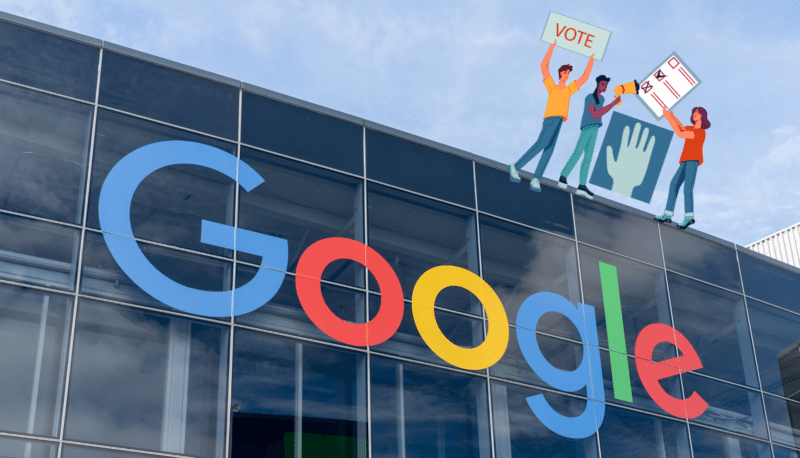First things first: the biggest “release” of the year to date is Google’s umpteenth delay of cookie deprecation. Aside from Google’s AI Overviews (formerly SGE), OpenAI’s product expansions and continued AI features will certainly throw some curveballs as the year progresses.
However, short of Microsoft shocking the world by switching its full search experience to ChatGPT – and maybe not even then – I don’t anticipate any other release this year will have anything close to the same fundamental significance in B2B marketing campaigns.
That said, if you’ve been consumed by cookies and/or the rollout of AI Overviews, you might have missed a few important releases from the major ad platforms. I’ll break down what I see as the most impactful in this article, segmented by platform.
Google’s 2024 updates
Year to date, Google’s updates have been mostly AI-focused (like fully phasing out Discovery campaigns in favor of Demand Gen) and relatively underwhelming, impact-wise. Despite pleas for better data and more useful features, Google has prioritized yet another interface redesign.
With most advertisers largely on their own to uncover and adopt new features post-beta, Google released a few interesting, somewhat useful features over the past few months.
Recently, there was a batch of Performance Max updates, the most useful of which looks to be “detailed demographics” in the audience insights section. Per Google:
“Detailed demographics in audience insights empower you to understand your untapped demographics so you can craft ads that resonate directly with specific age and gender groups.”
Other features include:
- High-value customer acquisition goals: An expansion upon previously introduced new customer acquisition goals that allows advertisers to focus on high-value new customers for those using purchase conversion goals.
- IP exclusions: Advertisers can now add IP exclusions to block spam, bots and unwanted traffic, such as employee IPs, to help proactively eliminate wasted spending.
- Final URL experimentation: Currently in beta, this feature allows advertisers to test different landing page experiences to drive higher conversion rates.
- Budget pacing insights: Advertisers can use this to examine real-time spend tracking and see projected spending alongside forecasted conversion performance.
In non-Performance Max updates, I have my eye on Google’s foray into CTV. For CTV, attributing value to fragmented content is a hurdle for adoption, but Google’s ability to track people’s behavior across channels might make the placement uniquely viable.
Last, although they haven’t rolled out in full, Google is playing with a couple of new ad types (“People also consider” in brand ads and a new, mysterious PPC ad) that we might or might not hear more about in future.
LinkedIn’s 2024 updates
LinkedIn has continued to roll out useful advertiser features this year.
In my eyes, the most important platform release is that they’re rolling out revenue attribution for HubSpot. LinkedIn already had this for Salesforce, but it’s super-impactful for the avid HubSpot community to be able to understand LinkedIn’s influence in closed deals. It should also be a big win for LinkedIn since it’s most effective in targeting the right audience with top-of-funnel content whose engagement value hasn’t (yet) been easy to quantify.
I’m also excited to test LinkedIn thought leader ad expansion to non-employees. You used to only be able to promote thought leader ads from your company, but say you have a customer or an influencer talking about your brand – the ability to amplify that social proof on LinkedIn could be highly effective.
Get the daily newsletter search marketers rely on.
There aren’t many to reflect on from a B2B perspective. I’m more curious about the upcoming election cycle and how that will jam up the feed, potentially drive up engagement costs and lead to any PR nightmares with echoes of Cambridge Analytica.
Fair or not, Meta is the first place I think of as friendly territory for things like AI-generated deepfakes, for instance. Given a recent announcement that the platform is working to recognize and label AI-generated images as such, they seem to be on the same wavelength.
We have no idea how effective and accurate that product will be, but if it works well, it could help users understand what they’re consuming – and help Meta guard against the bad actors it’s never proven good at suppressing.
Microsoft’s 2024 updates
I listed Microsoft last here because, even though some recent (inaccurate and since-corrected) numbers might suggest otherwise, it’s still scrapping for relevance on the search landscape.
There are two releases to note here – one that’s not yet live and one that looks mostly like a copycat of a Google feature that many B2B marketers dislike.
The pending (or at least rumored) release is OpenAI’s ChatGPT search rollout. We don’t know yet how it works or how much attention it will pull from Google, but there’s probably at least a little fire behind the smoke.
The real, tangible release is Microsoft’s global release of Performance Max – which carries the same name and, at a glance, the same strategic structure as Google’s Performance Max. It’s a copycat move for a campaign structure that is, to say the least, not optimized for B2B advertising.
Looking ahead
This is the part where I say that you should plan for a future without cookies now, no matter how many times Google kicks that can down the road. Whenever it comes, that release will be the biggest shoe to drop in advertising in a long time.
With that said, there will be other releases, some of which should go high on your list of testing priorities. Keep an eye on outlets like Search Engine Land to get real-time updates and insights on new features as they emerge.
Contributing authors are invited to create content for Search Engine Land and are chosen for their expertise and contribution to the search community. Our contributors work under the oversight of the editorial staff and contributions are checked for quality and relevance to our readers. The opinions they express are their own.











